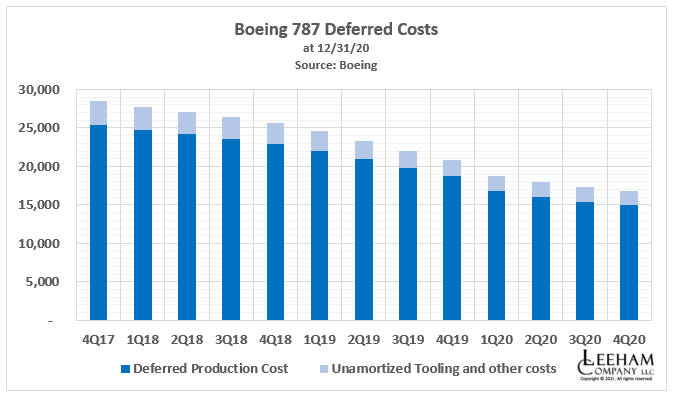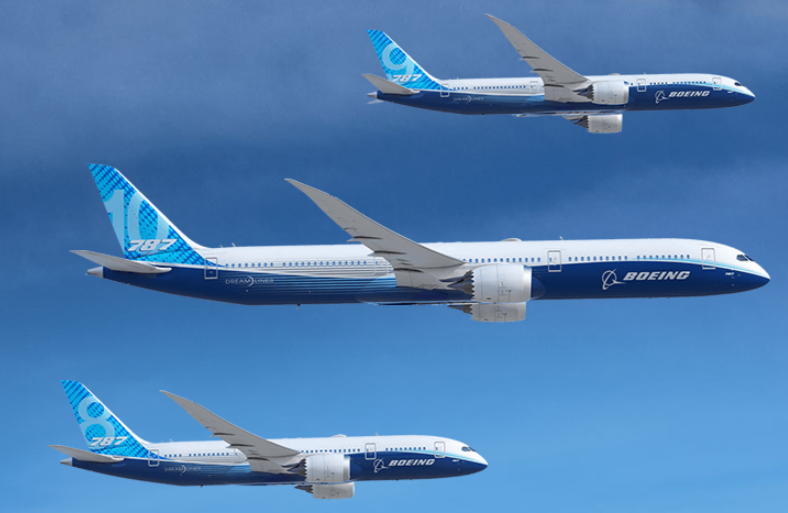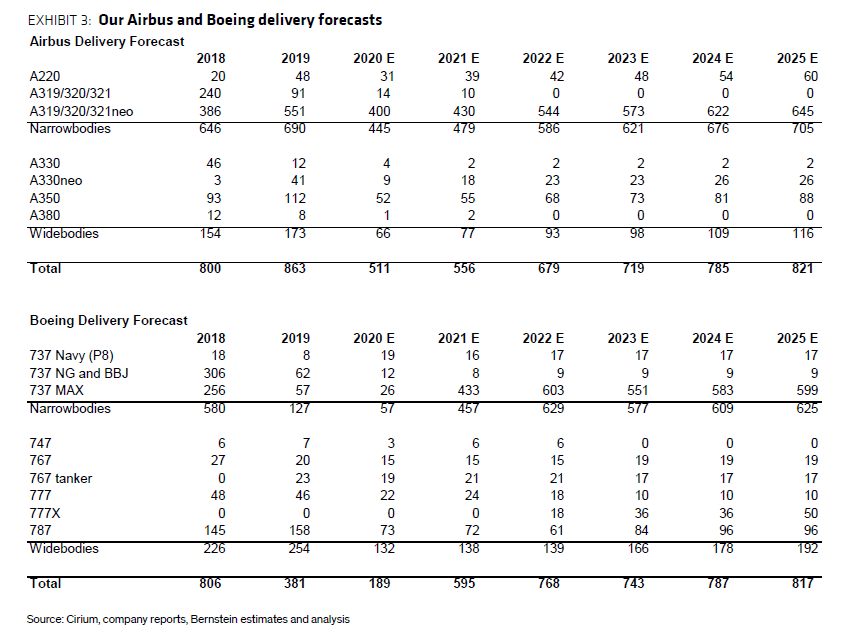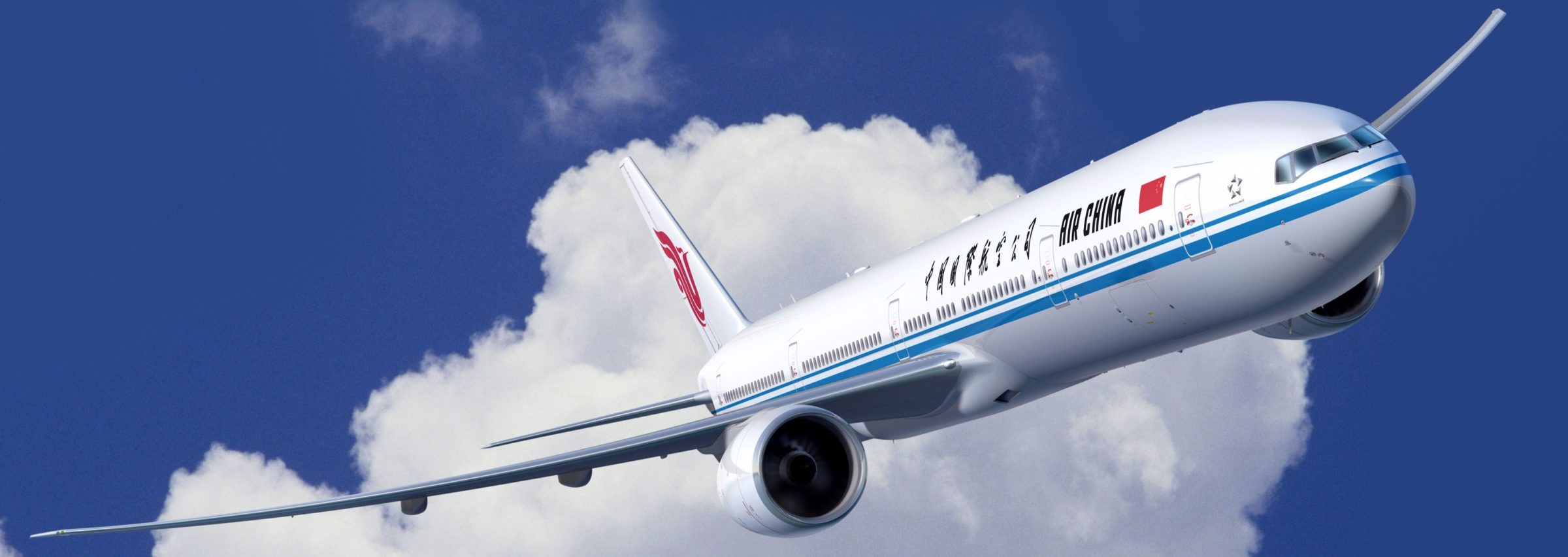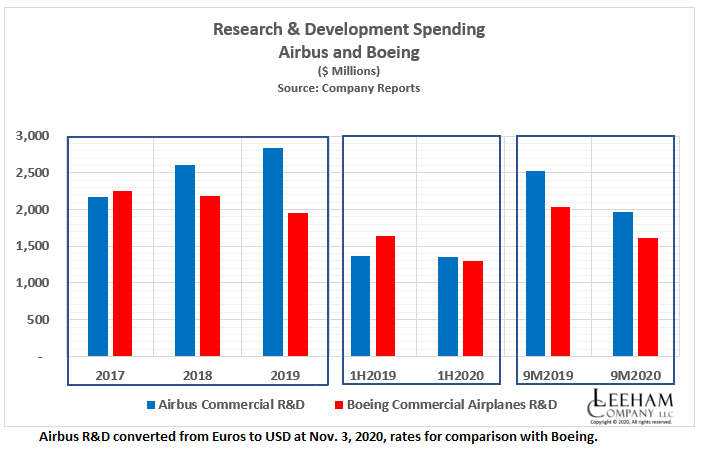Leeham News and Analysis
There's more to real news than a news release.
 Leeham News and Analysis
Leeham News and Analysis
- The Boeing 767 Cross Section, Part 1 November 24, 2022
- Movie Review: Devotion November 21, 2022
- China will accelerate development of its commercial aerospace sector November 21, 2022
- Bjorn’s Corner: Sustainable Air Transport. Part 46. eVTOL comparison with helicopter November 18, 2022
- The economics of a 787-9 and A330-900 at eight or nine abreast November 16, 2022
HOTR: Investors optimistic for Boeing. Are they too optimistic?
By the Leeham News Team
March 10, 2021, © Leeham News: Boeing’s recovery will be long, slow and painful.
But Boeing has been through long, slow and painful periods before.
Investors appear optimistic. The stock price has been rising since lows hit immediately after and throughout the pandemic.
The stock price is far off its high of $440 on March 1, 2019. March 1 was after the October 2018 Lion Air 737 MAX accident but nine days before the March 10, 2019, Ethiopian Airlines MAX crash. The price closed yesterday at $231, abut equal to where it was a year ago today.
Posted on March 10, 2021 by Scott Hamilton
HOTR: Alaska begins service with 737 MAX
- Alaska likely to cancel A320neo order. Details below.
By the Leeham News Team
March 1, 2021, © Leeham News: Alaska Airlines today launched its first service with the 737 MAX.
The carrier’s first flight was flight AS 482 from Seattle to San Diego, operated with a 737-9.
Alaska is the fourth US airline to operate the MAX. It is the third to use it in service since the type was recertified in November by the Federal Aviation Administration. American and United airlines returned their MAXes to service earlier. Southwest Airlines followed later this month. The Seattle-based airline hadn’t taken delivery of the MAX before the March 13, 2019 grounding.
Alaska is the second carrier to place a follow-on order for the MAX, after Ryanair, following recertification by the FAA. The MAX 9 will replace Alaska’s remaining Airbus A319/320ceos by 2024. Alaska continues to operate 10 Airbus A321neos and still has 30 A320neos on order, all from its acquisition of Virgin America in December 2016. In its annual 10K filing, Feb. 26, with the Securities and Exchange Commission, Alaska said, “At this time, we do not expect to take delivery of these 30 Airbus aircraft.” Alaska disclosed that $15m in deposits for the A320neo order, made by Virgin America, are “not likely to be recoverable.”
The carrier originally ordered the 737-8. Officials later swapped these orders for the larger MAX 9. Alaska’s 737-900ERs are configured with 178 seats compared with the 737-800’s 159 seats. The advertised range of the MAX 9 is 3,550 statute miles with one auxiliary fuel tank. The tank adds about 270 miles to the range of the base specification.
Boeing doesn’t break out the sales of the MAX sub-types. There are an estimated 250-300 orders for the MAX 9, a “tweener” airplane between the MAX 8 and MAX 10.
Posted on March 1, 2021 by Scott Hamilton
HOTR: Boeing continues to burn off deferred charges
By the Leeham News Team
Jan. 29, 2021, © Leeham News: With all the headlines about Boeing’s record-breaking 2020 loss and the $6.5bn forward loss for the 777X program, there was one item overlooked.
Boeing continues to reduce the deferred production costs for the 787. This is despite reducing production last year and suspending deliveries from October.
Deferred costs continued to come down quarter-over-quarter. Peaking at more than $32bn years ago, the total now is $16.6bn.
Posted on January 29, 2021 by Scott Hamilton
HOTR: Boeing could further cut 787 production rate—JP Morgan
By the Leeham News Staff
Jan. 20, 2021, © Leeham News: There is risk of another production rate cut for the 787, JP Morgan wrote in a Jan. 12 note.
Boeing already is reducing the rate to 5/mo this year. There are an estimated 60 787s in inventory due to production and quality control issues discovered last year that halted deliveries in November-December.
Posted on January 20, 2021 by Scott Hamilton
HOTR: Some predictions for Airbus and Boeing
Jan. 14, 2021, © Leeham News: Making predictions is always a hazardous business.
Some predictions take years to resolve. The outcome of others come sooner than later. If you’re right, you look sage. If you’re wrong, you look like an idiot.
But HOTR is going to take a stab at it anyway.
Posted on January 14, 2021 by Scott Hamilton
HOTR: Narrowbody delivery recovery in 2025
By the Leeham News Team
Dec. 15, 2020, © Leeham News: “We do not expect Airbus or Boeing to get back to planned narrowbody deliveries (adjust for MAX grounding) before 2025, with widebody deliveries taking much longer.”
That’s the view of Bernstein Research in a note published Dec. 14. It is a pessimistic view that belies the hopes of others in the industry.
Boeing officials said they hope to deliver about half the ~450 stored MAXes in 2021. Most of the remaining stored aircraft will deliver in 2022. There will be some spillover into 2023, Boeing said.
On this basis, Bernstein’s forecast suggests Boeing will deliver about 208 new-production MAXes in 2021. This computes to a production rate of 17/mo. The current rate is 6/mo, according to a Wall Street analyst. A rate break to 10/mo is expected soon.
In 2022, the Bernstein data suggests Boeing will deliver about 378 new-production MAXes. This is a production rate of about 31/mo. Boeing said it hopes to be at rate 31 in “early 2022.”
Posted on December 15, 2020 by Scott Hamilton
HOTR: Boeing hopes for break in China order drought after electors vote for Biden:
By the Leeham News Team
Nov. 30, 2020, © Leeham News: Boeing hopes the three-year order drought from China may come to an end next month.
The order, according to market intelligence, would be a boost for the slow-selling 777X. It could also mean new orders for the 787. Orders for the latter dropped significantly enough to prompt Boeing’s decision to shutter the Everett 787 production line next year. Production for the 787 will be consolidated in Charleston (SC).
Dec. 14 is when US presidential electors meet to cast their votes for Joe Biden or President Donald Trump, making official the projected winner. Biden won 306 electoral votes to Trump’s 232 in projections by all the major media. With almost all votes counted—and in some cases, recounted—Biden has 51.1% of the vote to Trump’s 47.2%. Biden received 80.1m votes to Trump’s 73.9m. The margin was nearly 6.2m.
China hasn’t ordered a Boeing airplane since 2017. Trump launched a trade war with China that escalated several times. He charged, without evidence, that China interfered with the US presidential election.
Posted on November 30, 2020 by Scott Hamilton
HOTR: New workforce newsletter; the return of Airchives
By the Leeham News Team
Nov. 12, 2020, © Leeham News: A new on-line newsletter, Future Aviation/Aerospace Workforce News, was launched last week  focusing on industry regulatory, corporate, training, recruitment and retention challenges.
focusing on industry regulatory, corporate, training, recruitment and retention challenges.
Created by Kathryn Creedy, a decades-long aviation writer and a contributor to LNA, the newsletter tackles workforce issues that long have received superficial coverage.
 Boeing, for as long as can be remembered, issued annual forecasts about the need for pilots and mechanics over the next decade. As the workforce aged, the numbers grew in each category to hundreds of thousands.
Boeing, for as long as can be remembered, issued annual forecasts about the need for pilots and mechanics over the next decade. As the workforce aged, the numbers grew in each category to hundreds of thousands.
The regional airline industry has long had challenges finding pilots.
Now, with COVID-19, cutbacks and bankruptcies upend the workforce.
Creedy’s new publication tackles these issues and more.
Posted on November 12, 2020 by Scott Hamilton
HOTR: Don’t get over-optimistic on COVID-19 vaccine news
By the Leeham News team
Nov. 10, 2020, © Leeham News: Pfizer yesterday announced it’s on track to produce a COVID-19 vaccine that appears to be 90% effective in trials. The company is one of the world’s leading drug makers.
This is good news.
 But before jumping to the old cliché about a light at the end of the tunnel, LNA’s Judson Rollins cautions, do the math.
But before jumping to the old cliché about a light at the end of the tunnel, LNA’s Judson Rollins cautions, do the math.
“Read the fine print at the end of the press release,” Rollins says.
“Based on current projections, we expect to produce globally up to 50m vaccine doses in 2020 and up to 1.3b doses in 2021,” the press release says.
“It’s a two-dose vaccine, so divide by two to figure the number of people who could be immunized,” Rollins says. “Even if a second candidate is approved and can be produced in the same quantity next year, that means just 17% of the world’s population will be vaccinated. And that assumes everything goes according to plan.”
Rollins did an extensive analysis of how quickly global air traffic would return to normal. In his July 13 post, Rollins projected that traffic won’t fully recover until 2024 at the earliest or 2028 at the latest. It all depends on how quickly a vaccine was developed, how quickly it could be distributed globally and how quickly people had confidence in it.
“We’re in only the second or maybe third inning of a very long ball game,” Rollins says. “Vaccines kill off a virus by denying it bodies in which to reproduce. If you don’t innoculate enough of the population while immunity lasts, you’re back to square one.”
Posted on November 10, 2020 by Scott Hamilton
HOTR: Airbus, Boeing R&D spending continues decline
By the Leeham News Team
Nov. 5, 2020, © Leeham News: Research and Development spending by the Airbus and Boeing commercial units declined year-over-year.
The movement is in keeping with cost-cutting by the Big Two OEMs. For Airbus, the reduction is due to the coronavirus pandemic. For Boeing, it’s due  to the 737 MAX grounding and the pandemic.
to the 737 MAX grounding and the pandemic.
Boeing’s spending typically lags Airbus. Richard Aboulafia, a consultant with Teal Group, for years criticized Boeing over its smaller spending, favoring instead shareholder value. Airbus overtook Boeing is innovative single-aisle airplane development years ago. Boeing’s choice of creating a 777 derivative instead of a new design to compete with the A350-1000 proved to be a weak move. There are only a handful of customers and the skyline is weak.
Posted on November 5, 2020 by Scott Hamilton
Email Subscription
Twitter Updates
My TweetsAssociations
Aviation News-Commercial
Commentaries
Companies-Defense
Resources
YouTube
Archives
- November 2022
- October 2022
- September 2022
- August 2022
- July 2022
- June 2022
- May 2022
- April 2022
- March 2022
- February 2022
- January 2022
- December 2021
- November 2021
- October 2021
- September 2021
- August 2021
- July 2021
- June 2021
- May 2021
- April 2021
- March 2021
- February 2021
- January 2021
- December 2020
- November 2020
- October 2020
- September 2020
- August 2020
- July 2020
- June 2020
- May 2020
- April 2020
- March 2020
- February 2020
- January 2020
- December 2019
- November 2019
- October 2019
- September 2019
- August 2019
- July 2019
- June 2019
- May 2019
- April 2019
- March 2019
- February 2019
- January 2019
- December 2018
- November 2018
- October 2018
- September 2018
- August 2018
- July 2018
- June 2018
- May 2018
- April 2018
- March 2018
- February 2018
- January 2018
- December 2017
- November 2017
- October 2017
- September 2017
- August 2017
- July 2017
- June 2017
- May 2017
- April 2017
- March 2017
- February 2017
- January 2017
- December 2016
- November 2016
- October 2016
- September 2016
- August 2016
- July 2016
- June 2016
- May 2016
- April 2016
- March 2016
- February 2016
- January 2016
- December 2015
- November 2015
- October 2015
- September 2015
- August 2015
- July 2015
- June 2015
- May 2015
- April 2015
- March 2015
- February 2015
- January 2015
- December 2014
- November 2014
- October 2014
- September 2014
- August 2014
- July 2014
- June 2014
- May 2014
- April 2014
- March 2014
- February 2014
- January 2014
- December 2013
- November 2013
- October 2013
- September 2013
- August 2013
- July 2013
- June 2013
- May 2013
- April 2013
- March 2013
- February 2013
- January 2013
- December 2012
- November 2012
- October 2012
- September 2012
- August 2012
- July 2012
- June 2012
- May 2012
- April 2012
- March 2012
- February 2012
- January 2012
- December 2011
- November 2011
- October 2011
- September 2011
- August 2011
- July 2011
- June 2011
- May 2011
- April 2011
- March 2011
- February 2011
- January 2011
- December 2010
- November 2010
- October 2010
- September 2010
- August 2010
- July 2010
- June 2010
- May 2010
- April 2010
- March 2010
- February 2010
- January 2010
- December 2009
- November 2009
- October 2009
- September 2009
- August 2009
- July 2009
- June 2009
- May 2009
- April 2009
- March 2009
- February 2009
- January 2009
- December 2008
- November 2008
- October 2008
- September 2008
- August 2008
- July 2008
- June 2008
- May 2008
- April 2008
- March 2008
- February 2008



